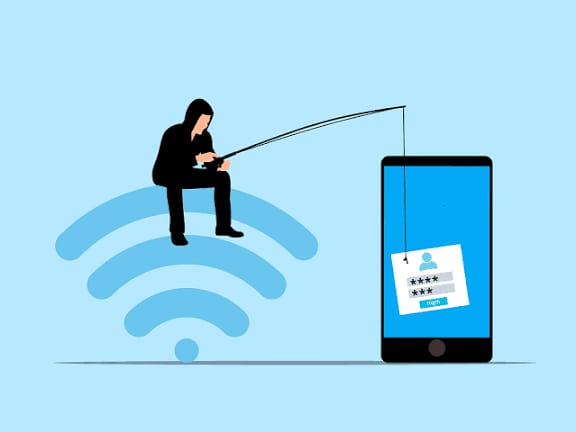
From Phishing to Data Theft: Understanding the New Age of Cybercrime in India
Cybercrime in India is evolving rapidly, ranging from phishing scams and identity theft to ransomware and data breaches. The surge in digital adoption and online transactions exposes individuals, businesses, and governments to sophisticated threats. Legal measures, cybersecurity tools, and awareness are critical to combat these crimes.
✨ Raghav Jain

Introduction
In today’s digitally connected world, cybercrime has emerged as one of the fastest-growing threats to individuals, businesses, and governments. India, with its rapidly expanding internet user base, is increasingly becoming a hotspot for cybercriminals. From phishing scams and ransomware attacks to sophisticated data theft and identity fraud, criminals are exploiting vulnerabilities in technology and human behavior alike.
Understanding the nature of modern cybercrime, its methods, and preventive measures is crucial for everyone—whether you’re a student, professional, or business owner. In this article, we explore the new age of cybercrime in India, its impact, common tactics, and practical steps to safeguard yourself and your data. In today’s digital era, India is witnessing a rapid technological revolution. With the proliferation of smartphones, online banking, e-commerce platforms, and social media, the internet has become an integral part of daily life. While this digital transformation has brought immense convenience and opportunities, it has also opened doors for a new breed of criminal activity: cybercrime. The spectrum of cybercrime in India has evolved significantly over the past decade, encompassing activities from phishing and identity theft to ransomware attacks and large-scale data breaches, posing a serious threat to individuals, businesses, and government institutions alike.
Phishing, one of the most common forms of cybercrime, remains a major concern in India. In phishing attacks, criminals impersonate trusted entities—such as banks, government agencies, or well-known online services—to trick users into revealing sensitive information like login credentials, credit card numbers, or personal identification details. With the rise of digital payments and online banking, phishing has become increasingly sophisticated. Attackers craft messages that appear authentic, often using urgent language to manipulate users into acting without caution. The success of these attacks relies on human vulnerability rather than technical loopholes, highlighting the importance of digital literacy and awareness among the general public.
Beyond phishing, data theft has emerged as a significant challenge in India. In the age of big data, companies and institutions collect enormous amounts of personal information, including names, addresses, phone numbers, email IDs, financial data, and even biometric information. Cybercriminals target this data for a variety of purposes, ranging from financial fraud to blackmail. India has experienced multiple high-profile data breaches, affecting millions of users. For instance, breaches in government databases or corporate networks can result in sensitive information being sold on the dark web, where it may be used for identity theft, unauthorized financial transactions, or even political manipulation. The consequences of data theft extend far beyond immediate financial losses, potentially compromising the privacy and security of citizens on a large scale.
Ransomware attacks have also become a pressing issue in India’s cyber landscape. In these attacks, cybercriminals infiltrate computer systems, encrypt critical files, and demand ransom payments in cryptocurrency to restore access. Such attacks can target individuals, small businesses, or even large corporations, crippling operations and causing financial damage. Indian healthcare institutions, educational organizations, and governmental bodies have been particularly vulnerable to ransomware, as many of these institutions still rely on outdated software or lack comprehensive cybersecurity infrastructure. The rise of ransomware highlights the need for proactive measures, including robust data backup strategies, up-to-date software systems, and employee training on recognizing suspicious activity.
Social media platforms have added another layer of complexity to cybercrime in India. With over a billion users active on platforms like WhatsApp, Instagram, Facebook, and Twitter, cybercriminals exploit these networks to spread misinformation, perpetrate scams, or conduct social engineering attacks. Fake profiles, misleading advertisements, and malicious links have become tools to manipulate users into sharing personal information or making financial transactions that result in loss. Young users and those unfamiliar with digital security practices are particularly susceptible to these tactics, making awareness campaigns and online safety education essential components of India’s fight against cybercrime.
India’s legal and regulatory framework has evolved to address the rising tide of cybercrime. The Information Technology Act of 2000, amended in subsequent years, lays down provisions for prosecuting cybercrimes, including hacking, identity theft, and publishing obscene material online. Additionally, law enforcement agencies have established specialized cybercrime units in major cities to investigate and respond to digital threats. However, enforcement remains challenging due to the borderless nature of cybercrime. Many perpetrators operate from outside India, making cross-border cooperation and international legal frameworks crucial to apprehending cybercriminals and preventing large-scale attacks.
Technology itself plays a dual role in the cybercrime ecosystem. While the same digital tools facilitate criminal activity, advancements in cybersecurity also offer solutions to mitigate risks. Artificial intelligence and machine learning algorithms are increasingly employed to detect fraudulent transactions, monitor network anomalies, and identify phishing attempts. Encryption technologies and secure authentication methods protect sensitive data, while awareness programs educate users on safe online behavior. Companies and institutions that invest in comprehensive cybersecurity strategies are better equipped to protect their assets and maintain trust with their clients and stakeholders.
Public awareness is a critical element in combating cybercrime in India. Despite technological measures, human behavior often remains the weakest link. Simple actions such as using strong and unique passwords, enabling two-factor authentication, verifying email and website authenticity, and being cautious about sharing personal information can significantly reduce vulnerability. Government initiatives and private organizations alike have launched campaigns to educate citizens about online safety, recognizing that prevention is far more effective than post-factum mitigation. Schools, colleges, and workplaces also play a vital role in integrating digital literacy into their curriculum and training programs.
The economic and social implications of cybercrime in India are far-reaching. Beyond financial losses, cybercrime erodes trust in digital systems, affecting consumer confidence in e-commerce, online banking, and digital communication. Businesses face reputational damage when customer data is compromised, and individuals may suffer emotional distress from identity theft or online harassment. For a rapidly digitizing nation like India, cybercrime poses a threat not only to individual security but also to economic growth, national security, and public confidence in digital governance.
In conclusion, the landscape of cybercrime in India has grown increasingly complex, evolving from simple scams to sophisticated attacks targeting individuals, corporations, and governmental institutions. Phishing, data theft, ransomware, and social media exploitation are some of the prominent threats facing the nation today. Addressing these challenges requires a multifaceted approach that combines technological innovation, legal enforcement, public awareness, and proactive cybersecurity measures. As India continues its journey toward digital transformation, understanding the new age of cybercrime is essential not only for safeguarding personal and organizational data but also for ensuring the broader stability and security of its digital ecosystem. Awareness, preparedness, and vigilance are the most potent tools in mitigating cyber risks, and only through collective effort can India hope to stay ahead in the ongoing battle against cybercrime.
What is Cybercrime?
Cybercrime refers to illegal activities conducted via computers, networks, or digital devices. Unlike traditional crimes, cybercrimes often leave no physical trace, making detection and prosecution challenging.
Types of cybercrime in India include:
- Financial Frauds: Unauthorized transactions, credit/debit card theft
- Identity Theft: Stealing personal information to commit fraud
- Data Breaches: Hacking into systems to steal confidential data
- Ransomware Attacks: Locking data and demanding payment
- Phishing Scams: Tricking users into sharing passwords or personal information
- Cyberstalking & Harassment: Online bullying, threats, or harassment
Why Cybercrime is Rising in India
Rapid Digitalization
With millions of Indians using smartphones, online banking, and digital payments, cybercriminals have a larger target pool.
Lack of Cyber Awareness
Many users are unaware of basic cybersecurity measures, making phishing and social engineering attacks highly effective.
Sophisticated Technology
Cybercriminals are increasingly using advanced tools, AI, and malware to exploit vulnerabilities.
Weak Legal Enforcement
Although laws exist, enforcement is slow, and cybercrime reporting is often low.
Increased Work-from-Home Culture
Remote work has expanded attack surfaces, with unsecured home networks and devices being prime targets.
Common Types of Cybercrime in India
1. Phishing Scams
Phishing is one of the most common cybercrimes. Attackers trick users into revealing passwords, OTPs, or banking credentials via fake emails, SMS, or websites.
Red flags:
- Emails or messages urging immediate action
- Unofficial links asking for personal information
- Spelling mistakes or suspicious sender addresses
2. Data Theft and Breaches
Cybercriminals target businesses, government portals, or online platforms to steal sensitive data like customer records, financial data, or trade secrets.
Impact:
- Identity theft
- Financial loss
- Corporate reputational damage
3. Ransomware Attacks
Ransomware encrypts files and demands a ransom to unlock them. Both individuals and companies have fallen victim to these attacks in India.
Protection tips:
- Regularly back up data
- Avoid clicking unknown attachments
- Keep systems updated
4. Online Banking and Financial Frauds
Frauds via mobile banking apps, UPI scams, and credit/debit card cloning are increasingly common. Criminals often impersonate banks or payment platforms.
Prevention:
- Never share OTPs or passwords
- Use official banking apps
- Monitor statements regularly
5. Cyberstalking and Online Harassment
Cyberstalking involves harassment, bullying, or threats over social media, messaging apps, or email. Women and teenagers are particularly vulnerable.
Response:
- Block offenders
- Report to authorities
- Document evidence
6. Social Engineering Attacks
Attackers manipulate victims psychologically to reveal confidential information. Common tactics include fake calls, messages, or posing as technical support.
The Science Behind Cybercrime Success
Cybercrime often succeeds because it exploits both technology and human psychology:
- Fear and Urgency: Messages claiming account closure or urgent payment trigger panic
- Trust Exploitation: Emails pretending to be from banks or government portals
- Curiosity: Fake “lottery” or “prize” messages encourage clicks
- Lack of Awareness: Many users cannot identify malicious links or attachments
Research indicates that most Indian cybercrime victims fall prey due to impulsive clicks, sharing confidential data, or ignoring security measures.
Impact of Cybercrime in India
- Financial Losses: Individuals and businesses lose billions annually to scams and ransomware
- Data Breaches: Private information of millions can be compromised
- Emotional Distress: Victims experience stress, anxiety, and loss of trust
- Economic Impact: Companies face reputational damage, lawsuits, and regulatory penalties
- National Security Threats: Large-scale cyber attacks can affect government systems and infrastructure
How to Protect Yourself from Cybercrime
Daily Cyber Hygiene Practices
Morning Routine:
- Check for software updates on devices
- Review account alerts and suspicious messages
- Use strong, unique passwords for each platform
During the Day:
- Avoid clicking unknown links or attachments
- Do not share OTPs, PINs, or passwords
- Use two-factor authentication wherever possible
Evening Routine:
- Clear browser cache and history
- Back up important files
- Enable antivirus or anti-malware scans
Weekly Cybersecurity Habits
- Audit accounts for suspicious activity
- Change passwords regularly
- Educate yourself on current phishing trends
- Enable device encryption
- Limit personal information shared on social media
Cybercrime Myths: Busted!
“Only tech experts are targeted.”
→ False! Everyone from students to senior citizens can be victims.
“Cybercrime only happens online.”
→ Wrong! Phone calls, SMS, and even in-person social engineering are common methods.
“Strong passwords are enough.”
→ Not completely. Cybersecurity requires multi-layered protection like 2FA, antivirus, and awareness.
“Reporting cybercrime is pointless.”
→ Incorrect! Reporting helps authorities track criminals and prevent future attacks.
“Macs or iPhones cannot get hacked.”
→ Myth! All devices are vulnerable without proper security practices.
Sample Daily Routine to Stay Cyber-Safe
Morning:
- Update apps and operating systems
- Check emails for suspicious messages
- Review banking alerts
Afternoon:
- Avoid public Wi-Fi for transactions
- Do not share passwords or OTPs
- Educate yourself on phishing scams
Evening:
- Back up important files
- Run antivirus or malware scans
- Reflect on any suspicious activity during the day
Weekly:
- Change passwords for email and banking accounts
- Enable device encryption
- Take a few minutes to learn about new cyber threats
Conclusion
The new age of cybercrime in India is dynamic, sophisticated, and ever-evolving. From phishing and financial frauds to data theft and ransomware, cybercriminals exploit both technology and human behavior to achieve their goals.
The key to staying safe lies in awareness, vigilance, and proactive cybersecurity habits. By implementing daily and weekly routines, safeguarding personal information, and staying informed about the latest scams, individuals and businesses can significantly reduce their risk of becoming victims.
Cybercrime is not just a technological issue—it’s a human challenge. Protecting yourself requires attention, education, and consistent action. Remember, every click, download, and password you manage carefully is a step toward a safer digital life.
Stay aware. Stay secure. Protect your data.
India’s digital future depends on informed citizens who can navigate the online world safely and confidently.
Q&A Section
Q1:- What is cybercrime and why is it a growing concern in India?
Ans :- Cybercrime refers to illegal activities conducted online, including hacking, phishing, and identity theft. With increasing internet usage and digital transactions in India, cybercrime has grown rapidly, threatening personal, corporate, and government data.
Q2:- What is phishing and how do cybercriminals use it to steal information?
Ans :- Phishing involves sending fake emails, messages, or websites to trick users into revealing sensitive information like passwords, bank details, or OTPs. It remains one of the most common cyber attack methods.
Q3:- How does ransomware work and what impact does it have on businesses?
Ans :- Ransomware encrypts a victim’s data and demands payment for its release. Indian businesses, hospitals, and institutions face operational disruption, financial loss, and reputational damage due to such attacks.
Q4:- What are data breaches, and why are they particularly concerning in India?
Ans :- Data breaches occur when unauthorized parties access confidential information. India’s rapid digitalization and weak cybersecurity practices make personal and financial data highly vulnerable to misuse.
Q5:- How is social engineering used in cybercrimes?
Ans :- Cybercriminals manipulate human behavior rather than technology to gain access to sensitive data. They exploit trust, fear, or urgency to trick individuals into revealing confidential information.
Q6:- What role do mobile apps and digital wallets play in cybercrime?
Ans :- Malicious apps and fake digital wallets steal credentials or money from users. In India, with high adoption of mobile banking, such attacks are increasing exponentially.
Q7:- How can AI and machine learning both help and challenge cybersecurity in India?
Ans :- AI helps detect anomalies, prevent fraud, and monitor networks, but cybercriminals also use AI to automate attacks, craft sophisticated phishing schemes, and evade detection.
Q8:- What legal frameworks exist in India to combat cybercrime?
Ans :- The Information Technology Act 2000, Indian Penal Code provisions, and rules on personal data protection govern cybercrime. Enforcement remains a challenge due to evolving threats and jurisdiction issues.
Q9:- How does identity theft occur, and what are its consequences for victims?
Ans :- Identity theft involves stealing personal information like PAN, Aadhaar, or banking details to commit fraud. Victims may face financial loss, legal complications, and damaged credit history.
Q10:- What preventive measures can individuals and organizations take to reduce cybercrime risks?
Ans :- Strong passwords, two-factor authentication, regular software updates, employee training, secure networks, and awareness about phishing are key steps to minimize cybercrime risks.
Similar Articles
Find more relatable content in similar Articles

From Phishing to Data Theft: ..
Cybercrime in India is evolvi.. Read More

Digital inclusion: designing d..
Designing technology for elder.. Read More

Cloud PCs: Will Your Next Comp..
Cloud PCs are transforming the.. Read More

Digital Privacy in 2025: How S..
In 2025, digital privacy faces.. Read More
Explore Other Categories
Explore many different categories of articles ranging from Gadgets to Security
Smart Devices, Gear & Innovations
Discover in-depth reviews, hands-on experiences, and expert insights on the newest gadgets—from smartphones to smartwatches, headphones, wearables, and everything in between. Stay ahead with the latest in tech gear
Apps That Power Your World
Explore essential mobile and desktop applications across all platforms. From productivity boosters to creative tools, we cover updates, recommendations, and how-tos to make your digital life easier and more efficient.
Tomorrow's Technology, Today's Insights
Dive into the world of emerging technologies, AI breakthroughs, space tech, robotics, and innovations shaping the future. Stay informed on what's next in the evolution of science and technology.
Protecting You in a Digital Age
Learn how to secure your data, protect your privacy, and understand the latest in online threats. We break down complex cybersecurity topics into practical advice for everyday users and professionals alike.
© 2025 Copyrights by rTechnology. All Rights Reserved.